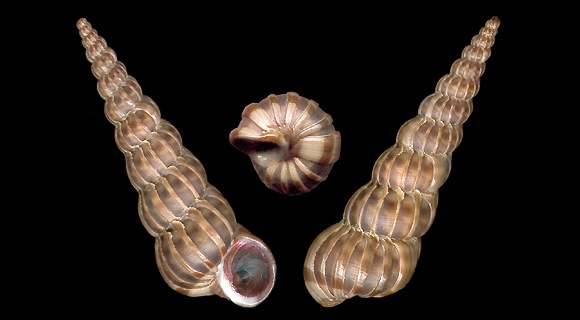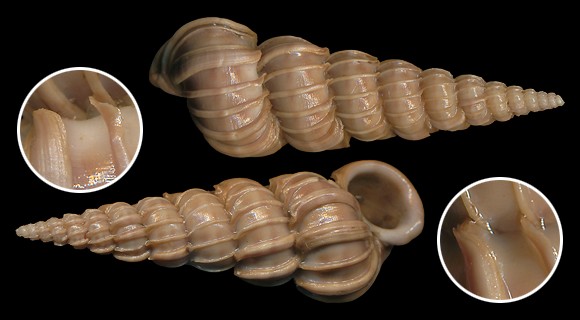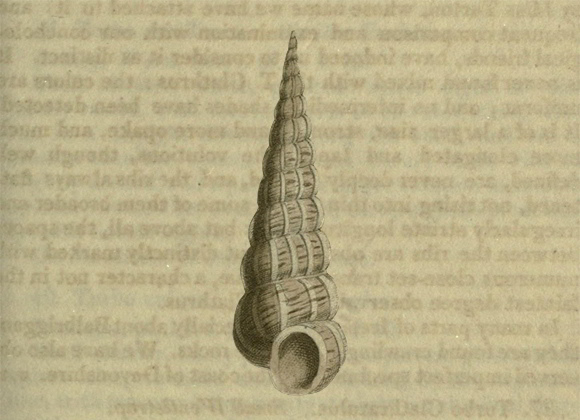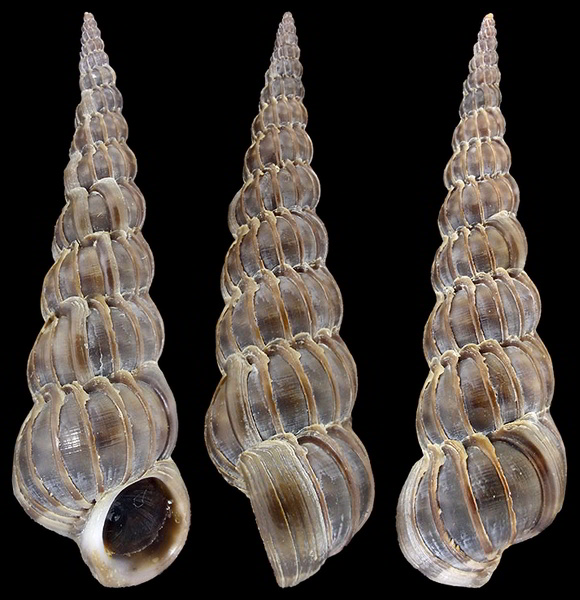
Basionym: Turbo turtonis.
« Shell tapering to a fine point, rather opake, pale chocolate-brown. Spires from twelve to sixteen, a little rounded, but not deeply separated [by a sutural furrow] like the last, and barred the whole length with eleven or twelve ribs, which are flat and very little raised above the surface, and do not as in the last traverse the divisions of the volutions, but generally terminate at the line of separation ; some of them are usually much stronger and broader, and irregularly striate longitudinally ; the spaces between the bars very finely but distinctly striate transversely ; on the body volution are three faint brown transverse bands, and two on each of the rest… » – W. Turton: A conchological dictionary of the British Islands vol. II, London 1819, p.208.
On sand at 20m deep, Málaga, Andalucia, S. Spain. 33mm.

In mud at 90m deep, off Tarragona, Catalunya, NE. Spain. 39mm.
« …aperture roundish-oval, margined ; the inner-lip a little spread, without perforation, whitish and polished. […] We had considered this shell as a mere brown variety of the last, till its specific differences were pointed out to us by Miss Turton, whose name we have attached to it. » – W. Turton: op. cit.

Turton: « And frequent comparison and examination with our conchological friends, have induced us to consider it as distinct. It is never found mixed with the T. Clathrus. The colors are uniform ; and no intermediate shades have been detected. It is of a larger size, stronger and more opake, and much more elongated and taper. The volutions, though well defined, are never deeply divided, and the ribs always flattened, not rising into thin plates, some of them broader and irregularly striate longitudinally. But above all, the spaces between the ribs are obscurely but distinctly marked with numerous close-set transverse striae, a character not in the faintest degree observable in T. Clathrus. »
Ultra-dark specimen from the collection Huet (FR).
Ayrolles lagoon, Gruissan, Occitania, S. France. 28mm.

« In many parts of Ireland, but especially about Balbriggan, they are found crawling among the rocks. We have also observed imperfect specimens on the coast of Devonshire. »

Original pictures provided by S. Clanzig (FR).
– (CC BY-NC-SA) –